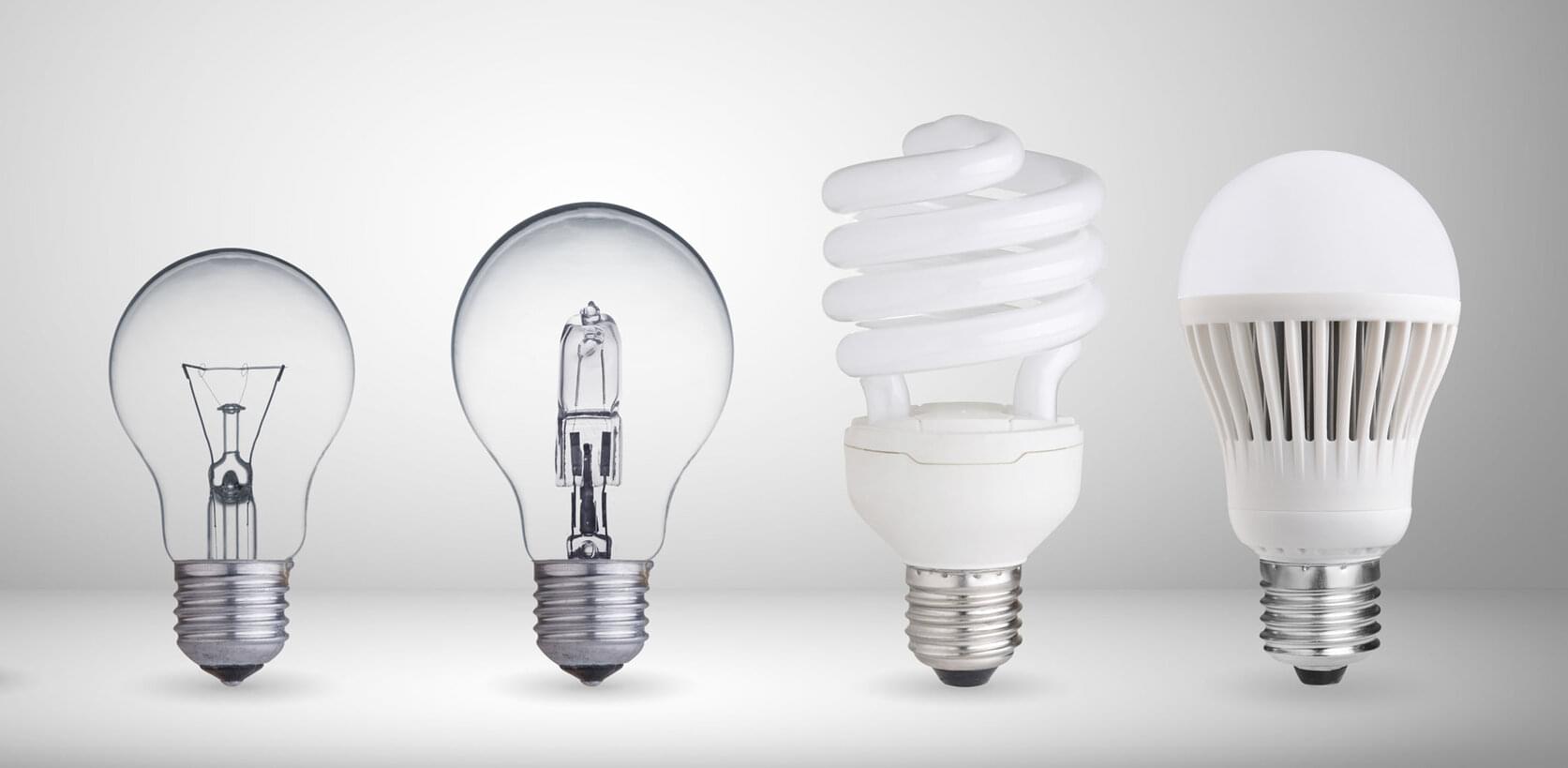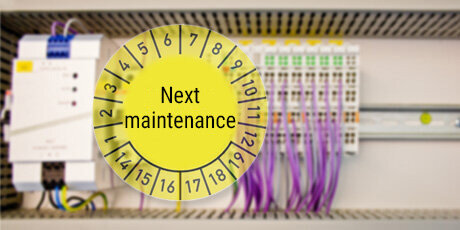
ENERGY OPTIMISATION
The price of electricity has been increasing steadily for more than 10 years, with no end in sight. When distributing the costs of lighting systems, effective use must be made of existing resources and savings potentials must be identified. The intelligent use of daylight, avoidance of unnecessary power consumption and lighting performance adapted to different viewing tasks and assured over the long-term by maintenance factors are the most important preparations for energy-saving lighting in buildings.
Every lighting concept is different and has individual framework conditions. If planning is to take the savings potentials of light management into account, it will differ greatly from one case to the next. The road towards an efficient lighting system starts with an analysis of the current lighting costs. It tackles the interaction between the areas of economics, ergonomics and ecology of lighting electronics and deduces saving potentials from this. During the preparation of a tailor-made concept you will receive optimum support in the form of expertise and experience gained from many different projects by the energy optimisation team.
ENERGY OPTIMISATION TEAM
If all potential savings are to be identified and exploited, early expert consultation and support is recommended. The accompanying of projects in the implementation phase is also important. Our energy optimisation team with its long years of project experience in many different areas looks forward to developing solutions for you.

ENERGY OPTIMISATION TOPICS
LED
LED technology quickly gained a successful footing in the field of technical lighting. LEDs are extremely energy-efficient and have a long service life coupled with reliable temperature management. Optimum degrees of efficiency are guaranteed through operation with electronic drivers. We provide absolute photometric data for LED luminaires to classify the lighting technology. In addition to its performance, it has good to excellent colour rendering. Since the LED itself is sturdy, insensitive, vibration-resistant and unbreakable, it is suitable for an extremely wide range of applications. Changes in luminaire design are accompanying the new LED designs. Decisive for luminaire efficiency is the optimum coordination of LED modules, their light colours and lumen packages as well as upstream optics. The energy-saving potentials of LEDs can be fully exploited when supplemented by light management systems. The increases in efficiency are shown in comparative calculations depending on the respective room situation. This means that economic advantages are then added to the important technological merits.
T5 fluorescent lamps
With a tube diameter of 16 mm and two different wattages for each lamp length, they have been optimised for ambient temperatures of 35°C operation at the electronic ballast. The smaller design of T5 lamps make smaller luminaire dimensions possible. The HE-type series (High Efficiency) in 14, 21, 28 and 35 watts are optimised to a high luminous efficiency of up to 104 lumen/watt. They have identical luminances but different lamp lengths which appear equally bright. The HO type series (High Output) is ideal for applications with high light output requirements. Optimised for high luminous fluxes, they are available in 24, 39, 49, 54 and 80 wattages. In one length (1480 mm) there are 3 wattages available – 35, 49 and 80 watts.
T8 fluorescent lamps
With a tube diameter of 26 mm they have been optimised for ambient temperatures of 25°C operation at the electronic ballast. For energy-related reasons, there has been a stark decline in operation using magnetic ballasts. Tri-phosphorous fluorescent lamps (e.g. light colour 840 and 830) are distinguished by maximum luminous flux and good colour rendering. A high luminous efficiency of up to 91 lumen/watt is guaranteed with operation using electronic ballast. For reasons of energy efficiency, refurbishment solutions are advisable for standard fluorescent lamps due to the reduced light output.
CONTROLLERS
The ballasts (VG) for fluorescent lamps are classified in accordance with the Energy Efficiency Index (EEI). In addition, they are grouped in accordance with BAT (Best Available Technology). In the case of LED luminaires, there is no classification of the electronic drivers. Here, the system performance is determined and the efficiency of the overall luminaire listed.
- Conventional ballast (KVG)
- Choke made of copper and wound iron core
- Low-loss ballast (VVG)
- Choke made of thicker copper wire and higher-grade iron
- Electronic ballast (EVG)
- Frequency converter / harmonic amplitude limiter / high-frequency filter
- Lamp is operated with high frequency (> 30 kHz)
| A1-BAT | Dimmable electronic ballast with improved efficiency level |
| A1 | Dimmable electronic ballast |
| A2-BAT | Electronic ballast with minimum losses |
| A2 | Electronic ballast with reduced losses |
| A3 | Electronic ballasts |
| B1 | Magnetic ballasts with very low losses (VVG) |
| B2 | Magnetic ballasts with moderate/low losses, since 1.3.2012 only permissible with max. standby loss of 0.5W |
| C | Magnetic ballasts with moderate losses (KVG) no longer permissible since 21.11.2005 |
| D | Magnetic ballasts with very high losses (KVG) no longer permissible since 18.12.2002 |
LIGHTING TECHNOLOGY
Luminaires where the focus is on application should be designed with the best possible luminaire operating efficiency. This includes the use of high-grade materials for the light-deflecting parts, such as ultra-pure aluminium with its good reflection properties, as well as glare-reduction measures such as panes or louvres. Other criteria include the light distribution and the thermal behaviour of the luminaire, matched to the lighting task. The optimum interplay between these factors leads to luminaires that radiate a maximum amount of light. And this minimises the number of luminaires required for a system.
Regiolux lists all the relevant values for its luminaires in an overview in the catalogue and on the internet. This includes luminous intensity distribution curves in accordance with DIN 5032 (parallel and at right angles to the luminaire axis) and an overview of the luminaires per room surface required for defined room heights at 300 lx or 500 lx.
MAINTENANCE
For lighting systems to work perfectly and perform as planned, maintenance costs must be included in the life cycle of the lighting system. Maintenance costs of around 25 percent should be added to the lighting costs and are a cost factor that should not be underestimated. This point not only includes cleaning and maintenance but also illuminant replacement and the time required for this. Low-maintenance systems, closed luminaires with a high luminaire maintenance factor and well thought-out, simple systems for replacing the illuminants help to lower operating costs while increasing economic efficiency at the same time. The maintenance intervals depend directly on the luminaire chosen and the illuminant used. For this reason, the light source and the luminaire must always be considered together when determining the maintenance factor. The choice of illuminants with a high service life and thus low replacement costs is recommended.

MODERN LIGHTING PLANNING CONCEPTS
Legal requirements, trends and increasing energy costs increasingly impact on the technical equipment level of in-house systems including lighting systems. They are reflected not least in the amendment to the energy saving ordinance (EnEV). In the meantime, there has been a steady increase in the use of light controllers and light management systems in lighting systems. Thanks to the use of intelligent light control, energy savings of up to 80 percent are possible compared with conventional systems. It makes little difference whether the energy-efficient control and regulation are intended for a small, medium or large lighting system.
From simple on/off switching to sensor systems and motion or presence detectors through to complex user-optimised DALI systems with daylight control, Regiolux offers a wide range of solutions for the efficient control and regulation of lighting systems. Tailoring to technical requirements – a prescribed lighting level at workstations – is critical.
Light and presence sensors for individual rooms that are not constantly used have become standard. In order to use lighting efficiently and comprehensively, as in modern facility management, the respective lighting situation can be controlled perfectly using configurable and programmable light management systems. This is where efficiency and convenience act together. In daylight scenarios, the artificial lighting is not merely switched on but dimmed in accordance with the total lighting requirement. The actions of shading systems are also integrated into the controls.
Even with typical standard applications, Regiolux lighting systems achieve permanently low running and maintenance costs through optimum system performance.